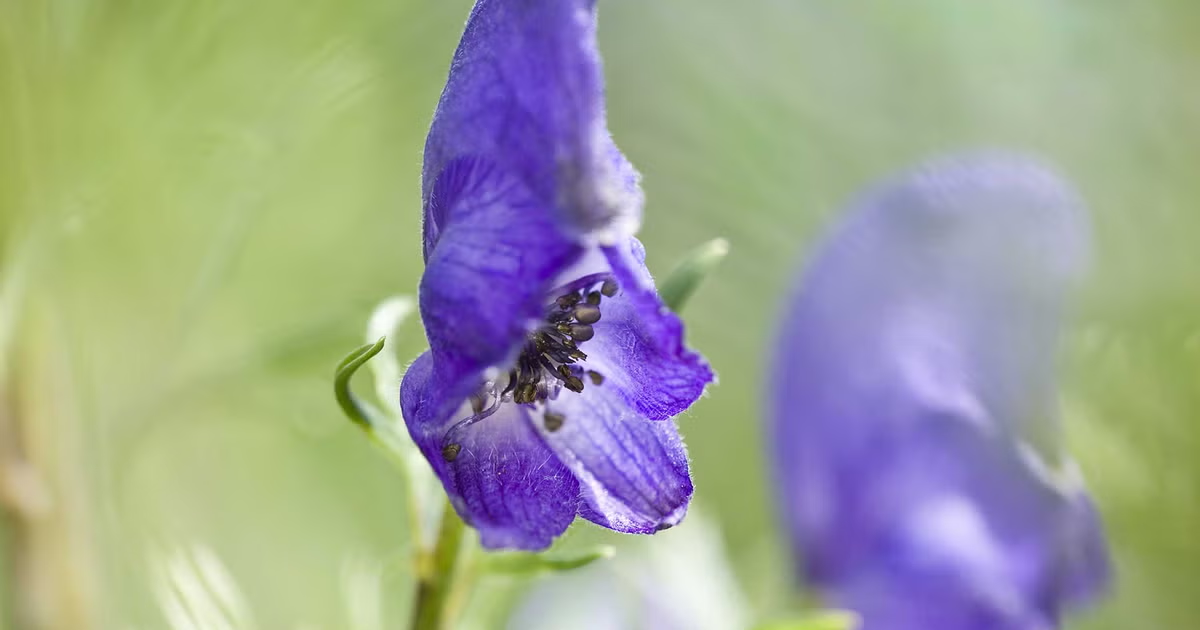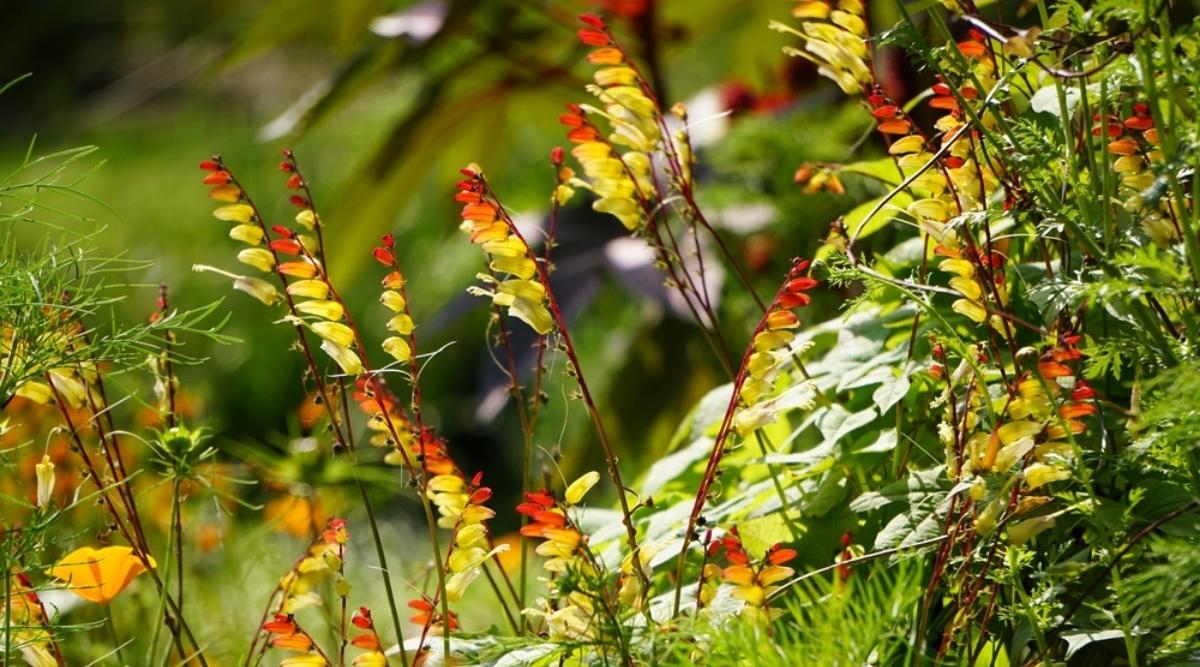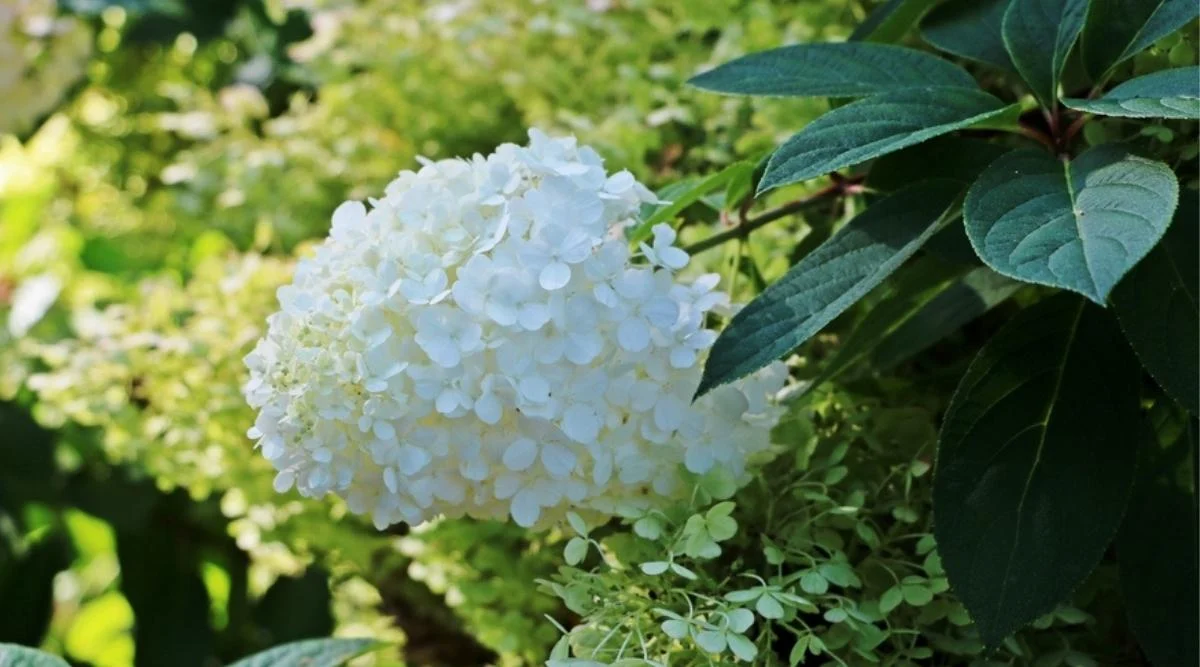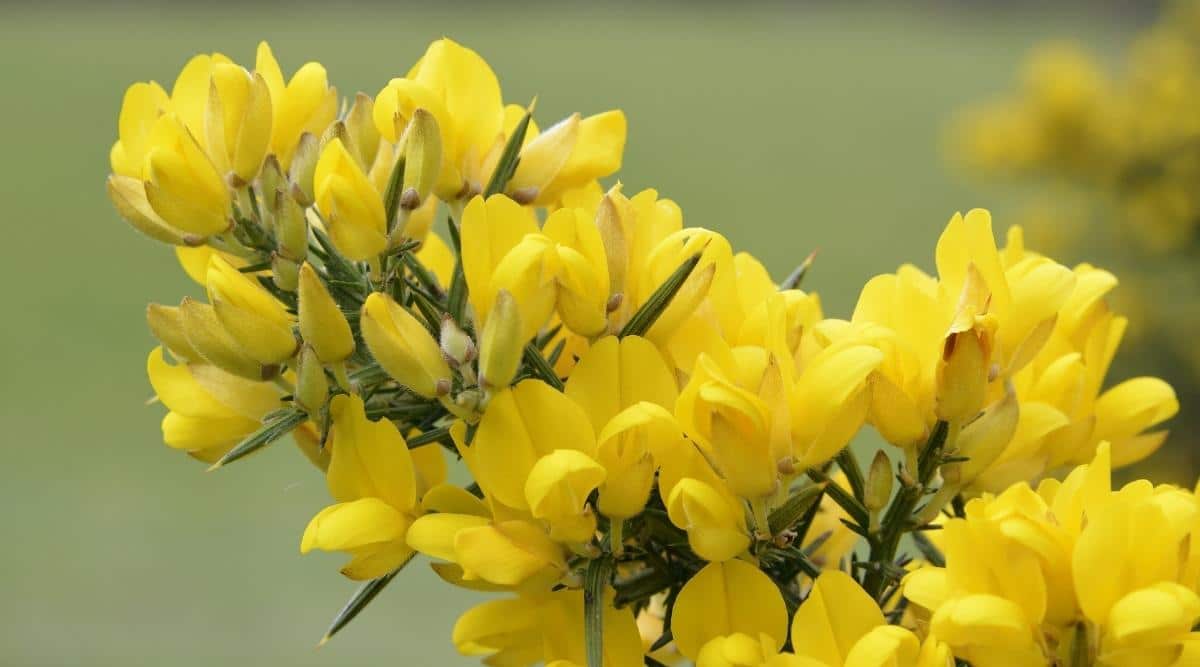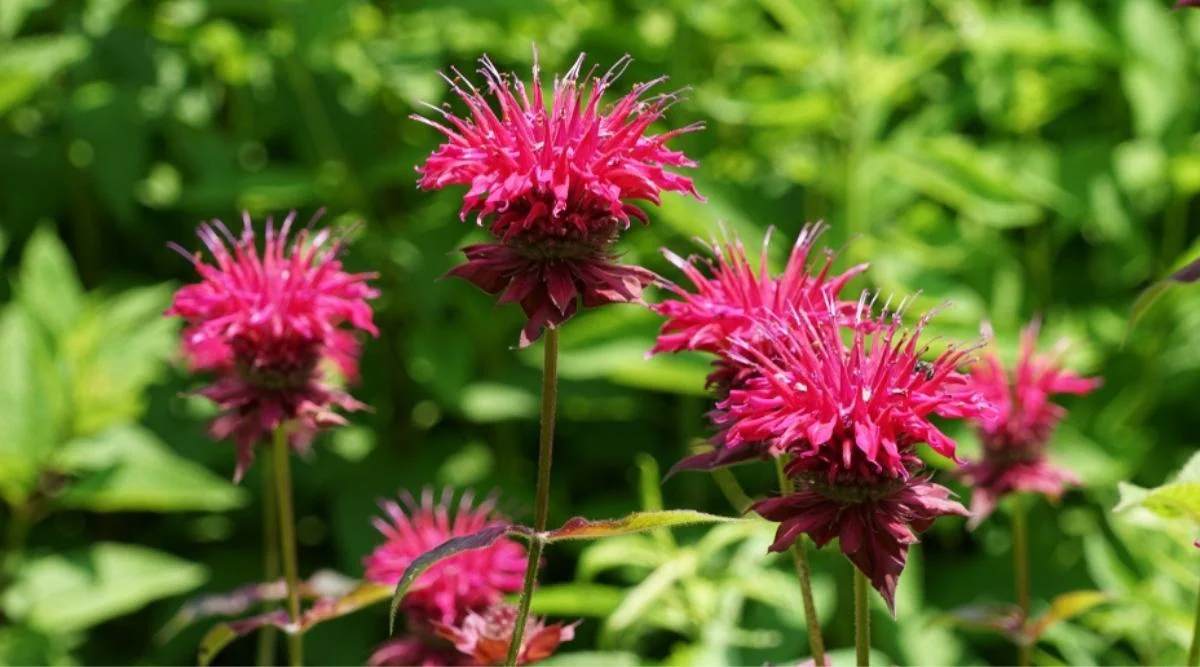meatthesavages.com – Wolfsbane (Aconitum), also known as monkshood or helmet flower, is a striking and iconic plant that has captivated gardeners and herbalists for centuries. With its beautiful blue, purple, or white flowers shaped like a hood, Wolfsbane is an attractive addition to many gardens, especially in shaded or woodland areas. However, despite its stunning appearance, Wolfsbane is highly toxic and should be handled with caution. This plant has a rich cultural history, appearing in folklore, mythology, and traditional medicine. Whether admired for its beauty or feared for its potency, Wolfsbane remains an intriguing and complex flower.
Appearance and Characteristics
Wolfsbane is a perennial plant that typically grows between 3 and 6 feet (1 to 2 meters) in height, with some varieties reaching even taller heights under optimal growing conditions. It features deeply lobed, dark green leaves that grow in a basal rosette and along the stems. These leaves are often described as “hand-shaped,” with finely serrated edges.
The flowers are the most striking feature of Wolfsbane. They grow in dense clusters atop tall, slender stems and are generally blue or purple, though some varieties can have white or yellowish blooms. The individual flowers have a distinct shape, resembling a hood or helmet, which is why Wolfsbane is also known as monkshood. The flower clusters bloom from mid-summer to fall, depending on the climate and growing conditions.
The plant’s distinctive flowers, coupled with its height and bushy foliage, make it an eye-catching addition to gardens, especially in shaded or woodland settings. However, due to its toxicity, it is important to plant Wolfsbane with caution, especially in areas where children or pets might be present.
Toxicity and Caution
One of the most important factors to understand about Wolfsbane is its toxicity. All parts of the plant, including the leaves, flowers, and roots, contain potent alkaloids such as aconitine. These compounds are highly toxic and can cause severe poisoning if ingested or even if the plant’s juices come into contact with broken skin.
Symptoms of Wolfsbane poisoning can include nausea, vomiting, diarrhea, dizziness, weakness, irregular heartbeat, and in severe cases, death. Even handling the plant without proper protection, such as gloves, can be dangerous. It is essential to exercise extreme caution when planting or working with Wolfsbane. For this reason, it is not recommended for gardens with young children or pets that may be tempted to taste the flowers or leaves.
Despite its toxicity, Wolfsbane has been historically used in small, controlled doses for medicinal purposes, though its use is now highly restricted due to the risk of poisoning. It is best to appreciate this flower for its beauty while being aware of its potential dangers.
Growing and Caring for Wolfsbane
Wolfsbane is a hardy perennial that grows well in cool, moist environments. It thrives in USDA hardiness zones 3 through 8 and prefers partially shaded to full-shade areas, making it a perfect plant for woodland gardens or areas with dappled sunlight. Here are some tips for growing Wolfsbane in a safe and controlled manner:
- Light Requirements: Wolfsbane prefers partial to full shade. While it can tolerate some sunlight, it grows best in shaded conditions where it can avoid the intense heat of full sun, which can cause wilting or stunted growth. A location with morning sunlight and afternoon shade is ideal.
- Soil: This plant prefers moist, well-drained, fertile soil that is slightly acidic to neutral. It thrives in soil that is rich in organic matter, and adding compost to the planting area can improve soil quality. Wolfsbane does not tolerate dry or poor soil conditions, so regular watering is necessary to keep the soil consistently moist.
- Watering: The plant requires consistent moisture to grow well, especially during the growing season. Be sure to water deeply, keeping the soil around the roots moist but not soggy. In particularly dry periods, additional watering may be required to maintain optimal growing conditions.
- Temperature and Humidity: Wolfsbane prefers cooler temperatures and higher humidity levels, making it well-suited for temperate climates. While it is hardy and can tolerate frost, it does not thrive in hot, dry climates. If growing in warmer regions, consider providing some afternoon shade to protect the plant from the intense heat.
- Fertilization: Wolfsbane benefits from occasional feeding with a balanced, slow-release fertilizer, applied in the spring as new growth begins. However, excessive fertilization should be avoided, as this can lead to overly lush growth at the expense of flowering. Organic fertilizers such as compost or well-rotted manure are often the best options for feeding the plant.
- Pruning: To encourage healthy growth and maintain the plant’s shape, it is a good idea to prune dead or damaged stems and leaves. Additionally, cutting back spent flowers after they bloom can help the plant conserve energy for next year’s growth. If you want to prevent self-seeding, it is also recommended to remove the seed pods before they mature.
Uses and Cultural Significance
Although Wolfsbane is highly toxic, it has been historically valued for its medicinal and cultural uses. In ancient times, it was used as a poison, as well as a remedy for ailments such as fever, pain, and inflammation. It was also employed by hunters to poison wolves and other predators, which is how it got its name. This practice gave Wolfsbane a dark reputation in folklore, with the plant often associated with witches and sorcery.
In many cultures, Wolfsbane has been linked to mythological stories of werewolves. The plant was believed to be an effective deterrent against werewolves, and it was often included in charms, potions, and amulets. It was also thought to be a symbol of protection, particularly in medieval Europe, where it was sometimes planted near homes to ward off evil spirits or supernatural forces.
Despite its dangerous reputation, Wolfsbane is still grown in gardens today, largely for its beauty and its association with traditional folklore. It is also occasionally used in the production of homeopathic remedies, although its use is highly regulated due to its toxicity.
Pests and Problems
Wolfsbane is relatively pest-resistant, but it can occasionally face issues with aphids, slugs, and snails. These pests may feed on the plant’s leaves, causing minimal damage, but they are usually not a major threat. If pests are an issue, you can use insecticidal soap or natural deterrents to protect the plant.
The plant can also be susceptible to fungal diseases, such as powdery mildew, especially in humid conditions. Ensuring good air circulation and avoiding overhead watering can help reduce the risk of fungal infections. If fungal problems arise, removing affected foliage and treating the plant with a fungicide can help manage the issue.
Conclusion
Wolfsbane is a stunning and captivating plant that has a rich cultural history and striking appearance. With its hood-shaped flowers and tall, bushy growth, it makes a dramatic addition to any garden, especially in shaded or woodland areas. However, it is crucial to remember that Wolfsbane is highly toxic and should be handled with great care. While the plant’s toxic properties make it unsuitable for gardens with children or pets, its beauty and unique features make it an intriguing and enigmatic addition to gardens for those who are aware of the risks. Whether grown for its folklore associations, medicinal history, or sheer aesthetic appeal, Wolfsbane remains a flower that commands respect and admiration from gardeners and horticulturists alike.
